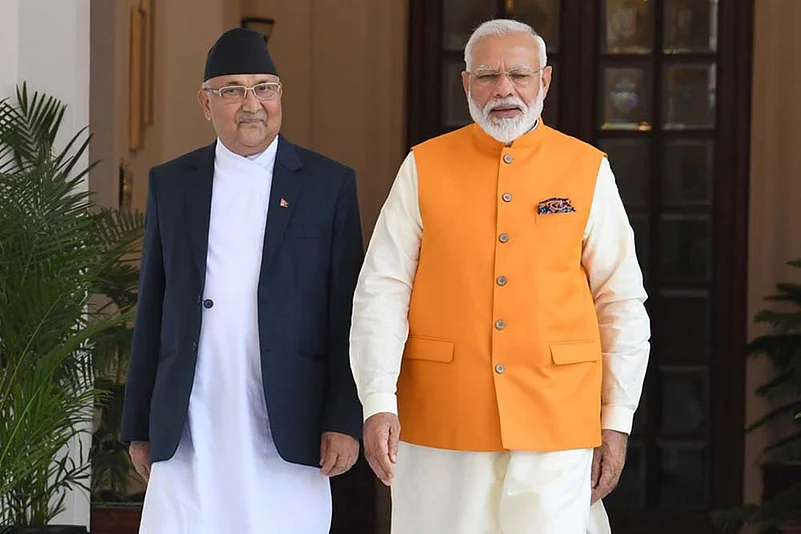The time-honoured India-Nepal relations are going through yet another test—this time around it’s about the interpretation of the two-century old Treaty of Sagauli, ratified on March 4, 1816 between the King of Nepal and the British East India Company.
On May 8, 2020, Union Defence Minister Rajnath Singh, through a video event, inaugurated the road link from Dharchula (Uttarakhand) to Lipulekh (on the border with China). The road would help boost trade and economic growth in this border region and facilitate the Mansarovar Yatra. The road, constructed by the Border Roads Organisation, has taken some time to build due to heavy snowfall, steep slopes, extremely low temperatures, restricted working season, besides numerous flash floods and cloudbursts causing disruptions and loss of lives and equipment.
The Government of Nepal reacted to the inauguration by unveiling a new political map of Nepal, placing the areas of Kalapani, Limpiyadhura and Lipulekh as part of their territory. Concomitantly, there were caustic and unreasonable remarks made by the prime minister of Nepal in parliament.
According to the 1816 Treaty of Sagauli, Nepal renounced all claims to the disputed Tarai, or lowland country, and ceded its conquests west of the river Kali and extending to the Sutlej. Effectively, river Kali was accepted as the Western boundary of Nepal with British India, and post 1947, between India and Nepal. At the root of the current controversy are Nepal’s recent claims stating that the source of the Kali lies at Limpiyadhura, hence Kalapani and Lipulekh, to the east of the Kali, belong to Nepal. The Survey of India maps since the 1870s showed the area of Lipulekh down to Kalapani as part of British India. The British used the Lipulekh pass for trade with Tibet and China. Both the Rana rulers of Nepal and the Nepalese kings accepted the boundary and did not raise any objection with the Government of India after India’s Independence.
In a media interview the defence minister of Nepal exacerbated the spat with an attempt to incite the Gorkha soldiers who serve in the Indian Army. In doing so, he is trying to harm the special bond that exists between India and Nepal. India, Nepal, and UK had signed the tripartite agreement in 1947, according to which 1, 3, 4, 5, 8 and 9 Gorkha Rifles joined the Indian Army and 2, 6, 7 and 10 Gurkha Rifles joined the British Army. Over the years, UK has reduced the complement of Gurkhas substantially. India, on the other hand, has increased the number of Gorkha units, with new raisings from time to time. According to an IDSA article of 2017, there are approximately 1,27,000 pensioners (90,000 of the Indian Army and 37,000 of the Central and state governments as well as paramilitary), in Nepal. Some members of the Communist Party in Nepal have tried in the past to strike at this special bond. The institutional strength of the Army and the qualities of the soldiers ensured that they have weathered through crises like the Maoist insurgency in Nepal, and the occasional standoff in the past. In today’s hyperactive social media environment, extra precautions against disinformation would be in order. An outreach to the pensioner community, to sensitise them about the vested interests, may also help.
According to reports appearing in the media, the Nepalese parliament has not passed the constitutional amendment for the new map. This is a positive development, as there are mechanisms in place to settle boundary issues between India and Nepal. Set up in 1981, the India-Nepal Joint Boundary Working Group has been able to complete almost 98 per cent of its mandate—to resolve boundary issues, demarcate the international border and manage boundary pillars. Perhaps an expeditious resolution of the remaining two per cent, through diplomatic means, should take care of the issue. India-Nepal relations are much too precious to be frittered away in rhetoric.
(Views expressed are personal.)
The author is member, National Security Advisory Board, and former Deputy Chief of Army Staff and Kashmir corps commander.
















